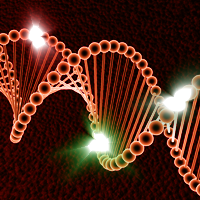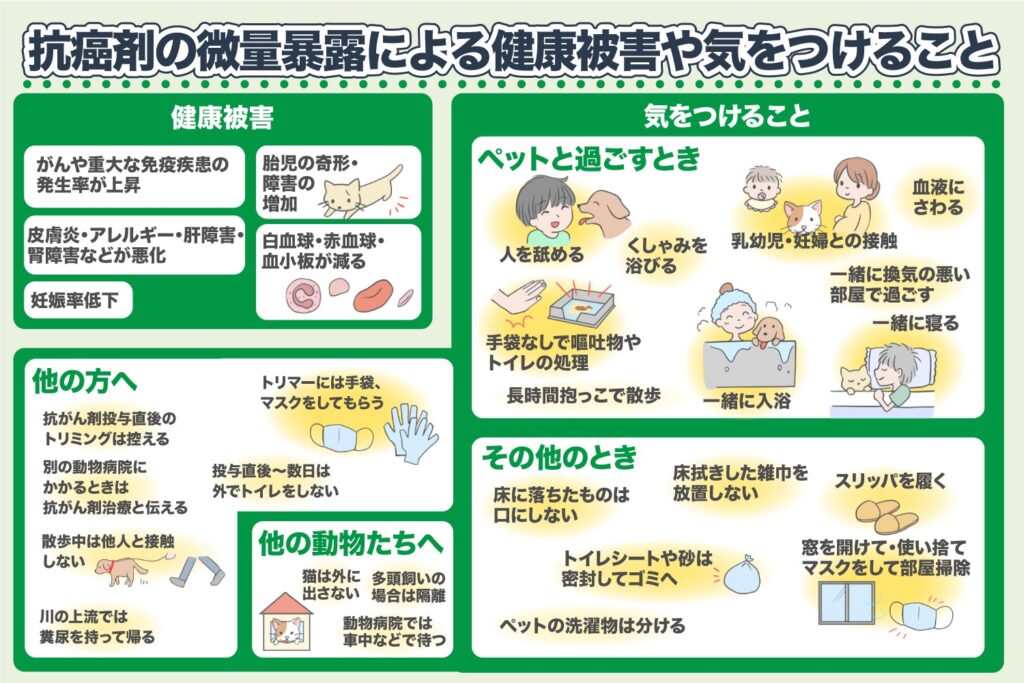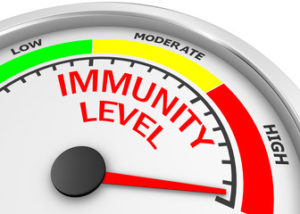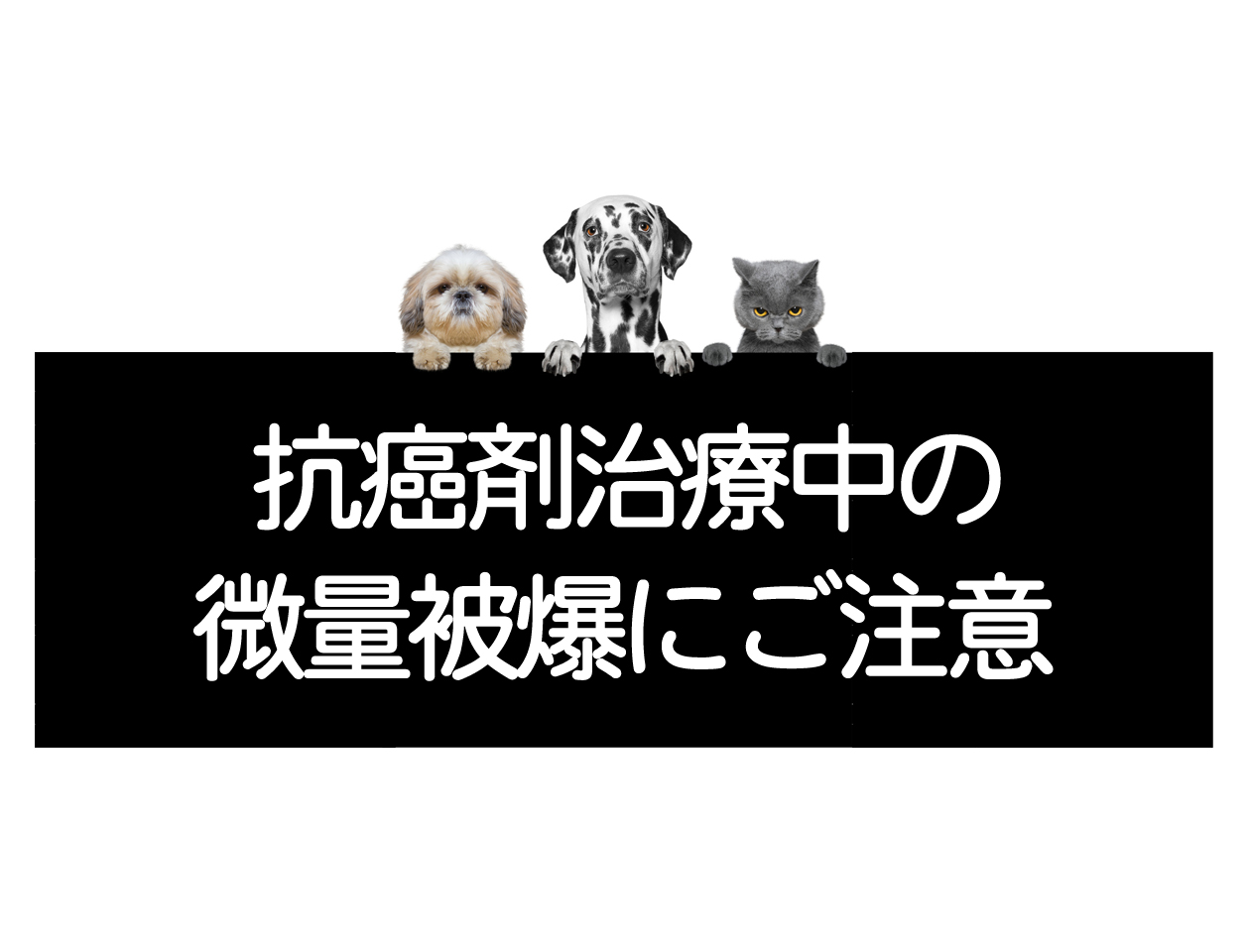When using chemotherapy drugs for the treatment of cancer in dogs, cats, and other pets, trace amounts of these drugs are excreted through their feces and urine.
In households with small children, special attention should be given to the risk of minor exposure to these chemotherapy drugs.
目次
Unknown Risks of Chemotherapy Drugs

Did you know that when you give your pet chemotherapy treatment, you and your family might also be exposed to potential dangers?
This page addresses the issue of “minor exposure” to chemotherapy drugs. This problem occurs when the chemotherapy drugs excreted by your pet lead to the pet owner being exposed.
Minor exposure to chemotherapy drugs can result in physical discomfort and, in some cases, severe problems.
Despite being a significant issue, most pet owners are not sufficiently informed about
Unlike common side effects, minor exposure does not cause immediate major harm.
Symptoms may appear years or even decades later.
Given such a long timeframe, pursuing the facts is extremely challenging.
The full extent of the damage is mostly unknown.
Most people may not experience actual harm from minor amounts of chemotherapy drugs, measured in micrograms, but it is possible that some may have already been affected.
When your beloved dog or cat receives chemotherapy treatment, you and your family living with the pet are potentially subject to minor exposure.
Currently, it seems difficult to obtain sufficient information from animal hospitals.
Therefore, we urge you to carefully review this page and consider protective measures for yourself.
Ways Chemotherapy Drugs Enter Your Body

How do chemotherapy drugs administered to animals affect our bodies?
Chemotherapy drugs given to animals are excreted through various pathways.
Almost 100% of the administered dosage is eventually expelled from the body.
Most are excreted through feces and urine, but chemotherapy drugs can also be found in saliva, breath, sweat, and shedding hair.
Chemotherapy drugs secreted through sebaceous glands volatilize from the body surface.
When living with a pet undergoing chemotherapy treatment, almost invariably, you will come into contact with these substances if you do not take precautions.
At the very least, you will breathe the air exhaled by your pet.
You may be absorbing chemotherapy drugs through your skin and lungs.
Chemotherapeutic agents are compounds that decompose poorly in the natural environment, so even there is a risk of minor exposure to these agents from aged excreta.
While some chemotherapeutic agents are broken down and detoxified within the animal’s body, the majority are excreted either unchanged or as even more toxic active metabolites.
It may be hard to believe that chemotherapeutic agents can volatilize, but it is known that some are highly volatile. Others can become aerosolized and disperse into the air. Naturally, in a closed room, the concentration of chemotherapeutic agents will increase.
Behavior of Chemotherapeutic Agents in the Body

Typical chemotherapeutic agents (cytotoxic chemotherapeutic agents) cause severe impacts on chromosomes within cells.
They bind strongly with DNA in chromosomes or cut the DNA. As a result, cell division fails, leading to cell death.
Even if you are exposed to small amounts of chemotherapeutic agents, you might not immediately feel any abnormalities. Any issues that do arise are often mild, like headaches or dizziness, making it hard to identify the cause as exposure.
The real damage may be felt years or even decades later.
Some cells may survive despite DNA damage due to insufficient attack by the chemotherapeutic agents.
From these cells, “undying cells” akin to zombies, meaning cancer cells, may emerge. If the immune system fails to function, these cancerous cells may proliferate and eventually form a large cancerous mass.
People Susceptible to Impact

As mentioned above, there is a possibility that healthy cells could become cancerous due to minor exposure to chemotherapeutic agents.
Chemotherapeutic agents particularly affect cells that are actively dividing.
For example, because reproductive cells are susceptible to damage, I think that couples who wish to conceive and families with infants and toddlers in their growth stages should take special care.
Additionally, if you are raising multiple dogs or cats, take caution as these pets tend to lie on the floor or lick surfaces.
The most extreme of these poisons is chemotherapy drugs. Even exposure in microgram quantities might have an impact on future health.
There is a common joke that “kusuri (medicine) backwards is risuku (risk),” but chemotherapy is no joking matter. It is normal for the side effect occurrence rate to be 80% or 90%. While the risk decreases the more diluted the chemotherapy is, it is believed that even if diluted 1000 times, the risk will not be zero.
For reference, 1/1000 of 1 mg is 1 microgram.
About Safe Amounts
No safe amount exists for chemotherapy drugs.
Side effects can occur even at amounts too low to be effective.
Please also refer to this: Reasons Why 90% of Chemotherapy Patients Experience Side Effects (with Illustration)
Of course, the less the amount of chemotherapy drugs, the lower the danger. However, such tests cannot be conducted on the human body.
Even at extremely low microgram levels, it is possible that future health issues may occur.
You have to protect yourselves.
“Not in past literatures” or “No comment from the veterinarian” are not very helpful when it comes to the issue of minimal exposure to chemotherapy drugs.
On Detoxification
There is no antidote for chemotherapy drugs. Procedures aiming to promote excretion through fluid therapy or diuretics are unlikely to be effective for minimal exposure.
There are drugs that neutralize spilled chemotherapy drugs, but they are not for use on the human body.
Although not a detoxification method, I recommend activities such as improving your diet to boost immunity as a future cancer prevention measure.
Recently, even in Japan, the exposure of healthcare workers to chemotherapy drugs is becoming a recognized issue. Administering chemotherapy is the job of nurses, but due to the pressures of their daily tasks, safety measures are often insufficient.
Overseas studies have pointed out a high rate of chromosomal abnormalities among nurses handling chemotherapy drugs. In fact, when examining the floors around IV setups, trace amounts of chemotherapy drugs are found, even without spills. Nurses are exposed to invisible droplets and fumes of chemotherapy drugs and work with anxiety about their future.
Pharmacists responsible for higher-risk tasks, namely “chemotherapy preparation,” have nearly comprehensive safety measures in place. They wear protective clothing, gloves, masks, and goggles to safeguard themselves from chemotherapy splashes. Additionally, to avoid inhaling volatile chemotherapy gases, they prepare the drugs by inserting only their hands into a safety cabinet. The scene resembles a chemical weapons factory.
Incidentally, within the safety cabinet, there is a significant amount of spillage of chemotherapy drugs.
Expected Health Hazards, Dangerous Acts, Precautions

Below, I have listed what I believe is essential.
Of course, what I have written is not exhaustive. Please make your own decisions.
It is also crucial to consider not only protecting yourself but also your family, acquaintances, others, other animals, plantings, and the surrounding environment.
Please act based on morality, assuming the worst-case scenario.
Examples of Health Hazards (Predicted)
The side effects of chemotherapy drugs disclosed by manufacturers are those observed when a sufficient dose is administered. However, this does not mean that “a small amount is safe.”
The drug-induced damages of chemotherapy can sometimes be life-threatening, so please be cautious.
- An increased rate of cancer occurrence such as lymphoma.
- An increased rate of severe immune diseases.
- A decrease in pregnancy rates.
- An increase in fetal malformations and disabilities.
- Worsening of dermatitis, allergies, liver disorders, and kidney disorders.
- A decrease in white blood cells, red blood cells, and platelets.
- Your pet licking you.
- Being sneezed on by your pet.
- Contact with infants.
- Contact with pregnant women.
- Handling your pet’s vomit without gloves.
- Cleaning the litter box without gloves.
- Coming into contact with blood.
- Spending time in poorly ventilated rooms.
- Bathing together.
- Sleeping in the same bed.
- Carrying your pet for long walks.
- Wear slippers indoors.
- Open windows and wear a disposable mask when cleaning.
- Do not leave mopping cloths on the floor.
- Seal used litter sheets or sand before disposal.
- Wash pet laundry separately.
- Do not put items dropped on the floor in your mouth.
- Do not take your pet for grooming immediately after chemotherapy administration.
- Ask the groomer to wear gloves and a mask.
- Inform other veterinary clinics if your pet is undergoing chemotherapy treatment.
- Avoid outdoor toileting for a few days following chemotherapy administration.
- Use a yellow ribbon on the leash during walks to prevent contact with others.
- In upstream areas (such as mountain campsites), bring back feces and urine.
- If you have multiple pets, isolate them.
- In a veterinary hospital, wait in the car, etc.
- Do not let cats out of the house.
- About Anti-Cancer Drugs Used in Cancer Treatment for Dogs and Cats – Side Effects, Precautions, and More
- Types and Protocols of Chemotherapy and Anti-Cancer Drugs Used for Lymphoma in Dogs and Cats
- Minimal Exposure to Anti-Cancer Drugs – Caution During Cancer Treatment in Pets
- Reasons Why 90% of Anti-Cancer Drugs Cause Side Effects
- Recommendation of Anti-Cancer Drugs for Dogs and Cats: What Are the Risks of Side Effects?
Be Aware of These Actions
When spending time with your pet, the following actions and habits may increase the risk of minor exposure to chemotherapy drugs for you or your cohabiting family members.
Other Precautions
Even when not in direct contact with your pet, precautions are necessary. To reduce exposure for you and your cohabiting family members, it is recommended to keep the following in mind.
Consider Others
To protect others and the general public from minor exposure to chemotherapy drugs, it is essential for pet owners to practice certain considerations, situational awareness, and empathy.
Protect Other Animals
Consideration for your cohabiting pets as well as animals encountered during walks is necessary. Avoid situations that may lead to grooming or fights.
Strengthen Immunity to Reduce Exposure Damage
 In Japan, which has a small land area and is one of the world’s leading users of anticancer drugs, it is strictly speaking impossible to completely prevent even minimal exposure to anticancer drugs.
In Japan, which has a small land area and is one of the world’s leading users of anticancer drugs, it is strictly speaking impossible to completely prevent even minimal exposure to anticancer drugs.
This is because anticancer drugs released into the environment are believed to already contaminate the air, tap water, agricultural products, livestock, and fish.
However, the risk when administering anticancer drugs to pets is significantly higher compared to these natural exposures.
Exposure to anticancer drugs can damage genes, potentially causing various diseases. Therefore, it is important to minimize exposure to anticancer drugs as much as possible.
Moreover, ensuring a robust immune system can help reduce the risk of damaged genes becoming cancerous, even if there is minimal exposure.
Improving liver function to enhance detoxification is also beneficial. It is expected that quality of life (QOL) can be further improved through liver measures using domestic SPF pork-derived placenta powder.
For households with multiple pets, small children, or pregnant women, it is especially advised to proactively undertake immune and liver health measures.
At the Cordy Research Laboratory, we also study the human applications of Cordy and domestic SPF pork-derived placenta powder, which are expected to modulate immunity. If you have any questions about Cordy or domestic SPF pork-derived placenta powder, please contact us.
監修獣医師:林美彩 所属クリニック:chicoどうぶつ診療所

代替療法と西洋医学、両方の動物病院での勤務経験と多数のコルディの臨床経験をもつ。 モノリス在籍時には、一般的な動物医療(西洋医学)だけでは対応が困難な症例に対して多くの相談を受け、免疫の大切さを痛烈に実感する。
ペットたちの健康維持・改善のためには薬に頼った対処療法だけではなく、「普段の生活環境や食事を見直し、自宅でさまざまなケアを取り入れることで免疫力を維持し、病気にならない体づくりを目指していくことが大切である」という考えを提唱し普及活動に従事している。
所属:

この記事が気に入ったら
いいね ! しよう
サイト内検索





